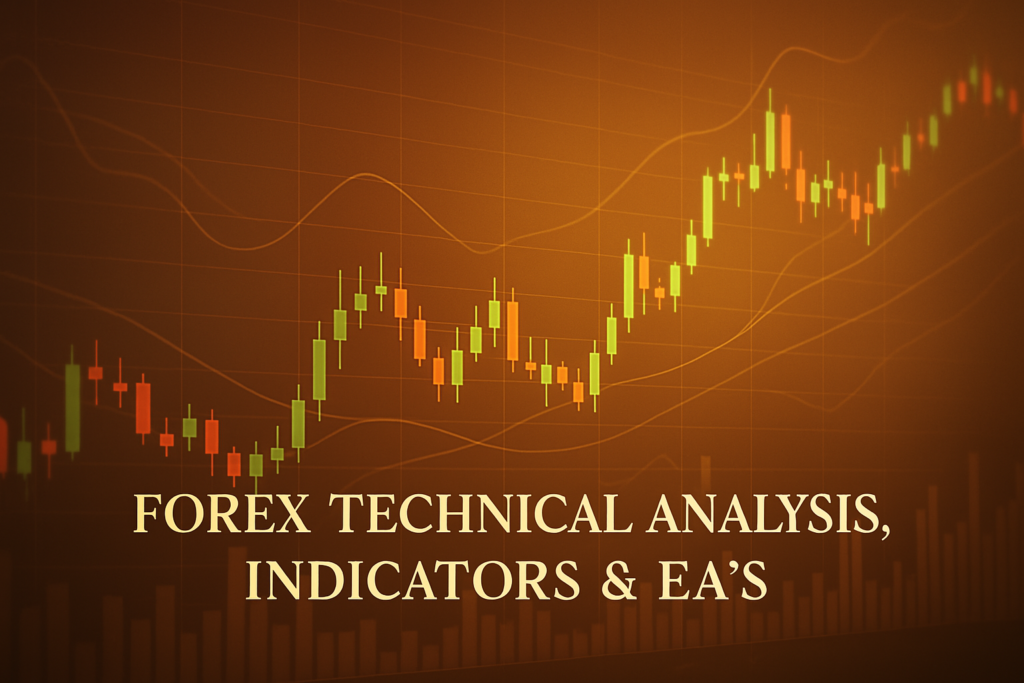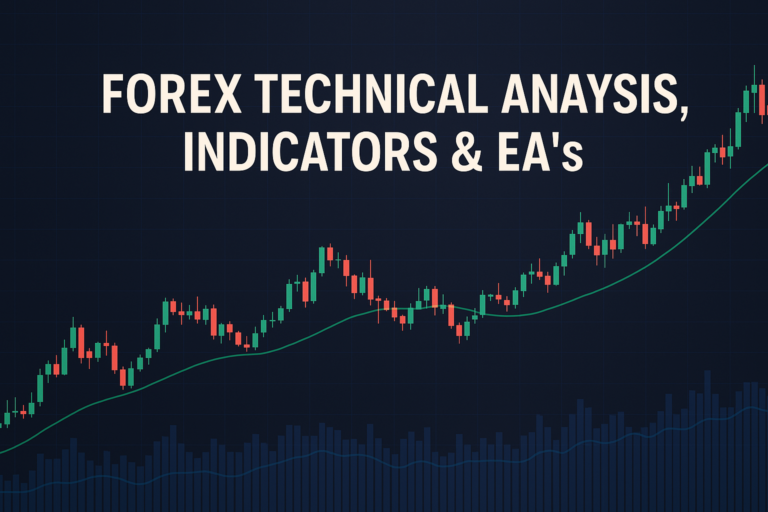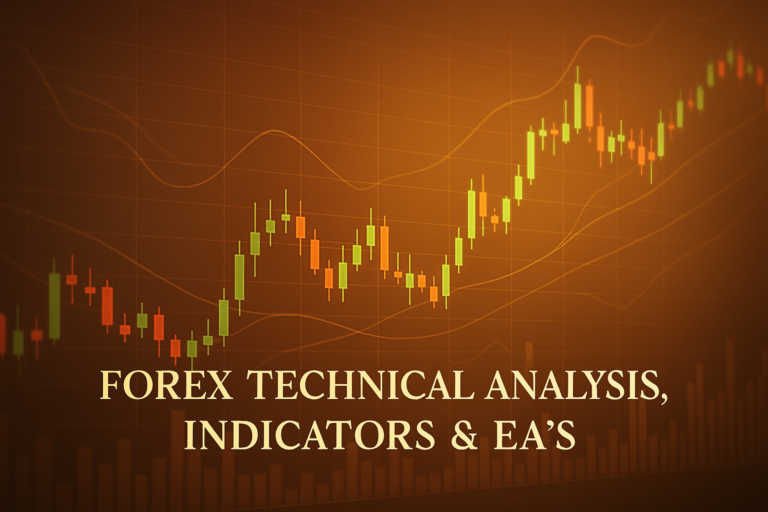
Stochastic full indicator is a powerful tool in Forex trading for analyzing price movements and making informed decisions.
The stochastic full indicator is a popular tool in Forex trading. It helps traders understand price movements and market trends. By using this indicator, traders can make more informed decisions about buying and selling currencies.
However, many traders, both beginners and professionals, often struggle to use the stochastic full indicator effectively. They may not fully understand how it works or how to apply it to their trading strategies. This lack of understanding can lead to missed opportunities or even losses.
Understanding and applying the stochastic full indicator is crucial for successful Forex trading. It can enhance your trading skills and help you make better decisions. In this article, we will explore everything you need to know about this powerful indicator.
We will cover its function, history, advantages, disadvantages, and various trading strategies to help you maximize its potential. Additionally, we will provide an example of USDJPY analysis and forecast for April 08, 2025.
What is a stochastic full indicator?
The stochastic full indicator is a tool that helps traders identify potential market reversals. It does this by comparing a currency’s closing price to its price range over a specific period. Imagine you are measuring how high a basketball player can jump. You compare their jump height to the highest and lowest jumps they have made in a certain time. This comparison helps you see how well they are performing.
Types of stochastic full indicator
There are different types of stochastic full indicators. The most common ones are:
- Simple: This version calculates the average of price movements over a set number of periods.
- Exponential: This type gives more weight to recent price movements, making it more responsive to changes.
- Weighted: Similar to exponential, but it uses a different formula to calculate the average.
How stochastic full indicator smooths out price action
The stochastic full indicator smooths out price action by filtering out market noise. This means that it helps traders focus on the overall trend rather than short-term fluctuations. By doing so, it provides a clearer picture of the market, making it easier to identify potential buy or sell signals.
Common periods used and why
Traders often use specific periods for the stochastic full indicator, such as 14, 21, or 28 days. The 14-period setting is popular because it balances sensitivity and reliability. Shorter periods can lead to false signals, while longer periods may miss important trends. Choosing the right period is essential for effective trading.
The History of Stochastic Full Indicator: How It Became Popular
Origin of stochastic full indicator
The stochastic full indicator was created by George Lane in the late 1950s. He developed it to help traders recognize market momentum. Lane believed that price movements could reveal valuable information about future trends. His work laid the foundation for many traders who wanted to improve their trading strategies.
When did traders start using it widely?
Traders began using the stochastic full indicator widely in the 1980s and 1990s. As computers and trading software became more advanced, it became easier for traders to implement this indicator in their strategies. It quickly gained popularity due to its effectiveness in identifying market trends and reversals.
Real-life stories
Many professional traders have credited the stochastic full indicator for their success. For example, a trader named John used this indicator to identify a strong bullish trend in the Euro. By buying at the right time, he was able to double his investment within weeks. Stories like John’s show the potential of the stochastic full indicator in Forex trading.
Advantages and Disadvantages of Stochastic Full Indicator
Advantages:
The stochastic full indicator has several advantages:
- Helps identify trends easily: The indicator makes it simple to spot upward or downward trends in the market.
- Useful for dynamic support and resistance: It helps traders find key levels where price may bounce back.
- Works well for crossover strategies: Traders can use it to identify potential buy and sell signals when lines cross.
Disadvantages:
Despite its benefits, the stochastic full indicator has some drawbacks:
- Lags behind price movements: The indicator may not react immediately to sudden price changes, causing delays in signals.
- Can give false signals in sideways markets: When the market is not trending, the indicator may provide misleading information.
How to Apply Stochastic Full Indicator on MT4 & MT5
Step-by-step guide to adding stochastic full indicator on charts
To add the stochastic full indicator on your charts in MT4 or MT5, simply follow these steps:
- Open your trading platform and select the chart you want to analyze.
- Click on “Insert” in the top menu, then select “Indicators.” Choose “Oscillators” and finally “Stochastic Oscillator.”
- Adjust the settings as needed and click “OK” to add the indicator to your chart.
Customizing stochastic full indicator settings
You can customize the stochastic full indicator settings by changing the periods, colors, and types. To do this, right-click on the indicator, select “Properties,” and adjust the settings according to your preferences. This will help you create a visual representation that suits your trading style.
Saving templates for easy application
Once you have customized your stochastic full indicator, you can save it as a template for future use. Right-click on the chart, select “Template,” then “Save Template.” Give it a name and click “Save.” This way, you can quickly apply your preferred settings to other charts.
5 to 7 Trading Strategies Using Only Stochastic Full Indicator
Strategy 1: All Time Frame Strategy (M5 to D1)
This strategy works across all time frames, from M5 to D1. It helps traders identify potential buy and sell signals based on the stochastic full indicator’s readings.
How it works: When the indicator crosses above 20, it’s a potential buy signal. When it crosses below 80, it indicates a potential sell signal.
Example of trade setup: If the stochastic full indicator crosses above 20 on the H1 chart, consider entering a buy position.
Strategy 2: Trending Strategies
This strategy focuses on trending markets. It helps traders identify entry points when the market is moving in one direction.
How it works: When the indicator is above 50, look for buy signals. If it’s below 50, look for sell signals.
Example of trade setup: If the stochastic full indicator is above 50 and crosses above 20, enter a buy position.
Strategy 3: Counter Trade Strategies
This strategy involves trading against the current trend. It can be risky, but it may lead to significant profits if executed correctly.
How it works: When the indicator reads above 80, look for sell signals. If it reads below 20, consider buy signals.
Example of trade setup: If the stochastic full indicator is above 80 and shows signs of turning down, enter a sell position.
Strategy 4: Swing Trade Strategies
This strategy aims to capture short-term price movements within a larger trend.
How it works: Use the stochastic full indicator to identify overbought and oversold conditions. Buy when the indicator crosses above 20 and sell when it crosses below 80.
Example of trade setup: If the stochastic full indicator crosses above 20 after being below it for a while, consider entering a buy position.
5 to 7 Trading Strategies Combining Stochastic Full Indicator with Other Indicators
Strategy 1: Moving Average Convergence Divergence (MACD)
This strategy combines the stochastic full indicator with the MACD to confirm signals.
How it works: Look for buy signals when the stochastic full indicator crosses above 20 and the MACD line is above the signal line.
Example of trade setup: If both indicators align, enter a buy position.
Strategy 2: Bollinger Bands
This strategy uses Bollinger Bands to identify potential breakouts in conjunction with the stochastic full indicator.
How it works: Buy when the price touches the lower Bollinger Band and the stochastic full indicator is below 20. Sell when the price touches the upper band and the indicator is above 80.
Example of trade setup: If the price touches the lower band and the stochastic full indicator is below 20, enter a buy position.
Strategy 3: RSI (Relative Strength Index)
This strategy combines the stochastic full indicator with the RSI for a more robust trading signal.
How it works: Buy when both indicators show oversold conditions (stochastic below 20 and RSI below 30). Sell when both show overbought conditions (stochastic above 80 and RSI above 70).
Example of trade setup: If both the stochastic full indicator and RSI confirm an oversold condition, enter a buy position.
Thinkorswim Accumulation Distribution
For traders using Thinkorswim, understanding the thinkorswim accumulation distribution can enhance your trading strategy further by analyzing price movement and volume.
Top 10 FAQs About Stochastic Full Indicator
1. What is the stochastic full indicator?
It is a momentum oscillator that compares a currency’s closing price to its price range over a specific period, helping traders identify potential market reversals.
2. How do I set the periods for the stochastic full indicator?
You can set the periods based on your trading style. Common settings are 14, 21, or 28 days. The 14-period setting is popular for balancing responsiveness and reliability.
3. Can I use the stochastic full indicator on all time frames?
Yes, the stochastic full indicator can be used on any time frame. It is versatile and can be applied to M5, H1, D1, or any other time frame you prefer.
4. What does it mean when the indicator is above 80?
When the stochastic full indicator is above 80, it indicates that the market is overbought. This may suggest a potential sell opportunity.
5. What does it mean when the indicator is below 20?
When the stochastic full indicator is below 20, it indicates that the market is oversold. This may suggest a potential buy opportunity.
6. Can the stochastic full indicator give false signals?
Yes, in sideways markets, the stochastic full indicator can provide false signals. This is why it is essential to combine it with other indicators and analysis methods.
7. How can I improve my trading using the stochastic full indicator?
To improve your trading, practice using the stochastic full indicator with different strategies. Test different settings and combine it with other indicators to enhance your analysis.
8. Is the stochastic full indicator suitable for beginners?
Yes, the stochastic full indicator is user-friendly and suitable for beginners. It can help them understand market momentum and make informed decisions.
9. How does the stochastic full indicator compare to other indicators?
The stochastic full indicator is unique in its focus on price momentum compared to other indicators like moving averages, which focus on trend direction. Each indicator has its strengths and weaknesses.
10. Should I rely solely on the stochastic full indicator for trading?
While the stochastic full indicator is helpful, it is essential not to rely solely on it. Combining it with other indicators and analysis methods can lead to more informed trading decisions.
Conclusion
In summary, the stochastic full indicator is a valuable tool for Forex traders. It helps identify trends, potential reversals, and provides insights into market momentum. By understanding its advantages and disadvantages, and applying various strategies, traders can enhance their trading experience.
Always test your strategies using a demo account before risking real money. This practice will help you gain confidence and improve your trading skills over time. Happy trading!
To deepen your understanding of forex trading, consider exploring resources like DailyFX, Investopedia
Expand Your Knowledge
- 📌 Forex Trading Learning Road Map
- 📌 Forex Trading Course with no Fees
- 📌 Forex Trading Issues, Problems, and Solutions
- 📌 Forex Daily Forecast & Live Updates
- 📌 Forex Fundamental & News Analysis: Tomorrow’s Market Movers & Trade Opportunities
- 📌 Forex Education Hub: Learn & Profit
- 📌 Forex Technical Analysis, Indicators & EA’s
Start Trading Today
Ready to take your forex trading to the next level? Open an account with Exness, one of the most trusted platforms in the industry. 👉 Sign Up Now and trade with confidence!
My recommended broker stands out with ultra-low spreads for beginners, instant withdrawals, and zero spread accounts for pro traders.
Trusted since 2008, lightning-fast execution, no hidden fees, and a secure, transparent trading environment—giving you the edge you need to succeed. 🚀
YouTube Video Library: Related Videos
Note: The video above is embedded from YouTube and is the property of its original creator. We do not own or take responsibility for the content or opinions expressed in the video.



